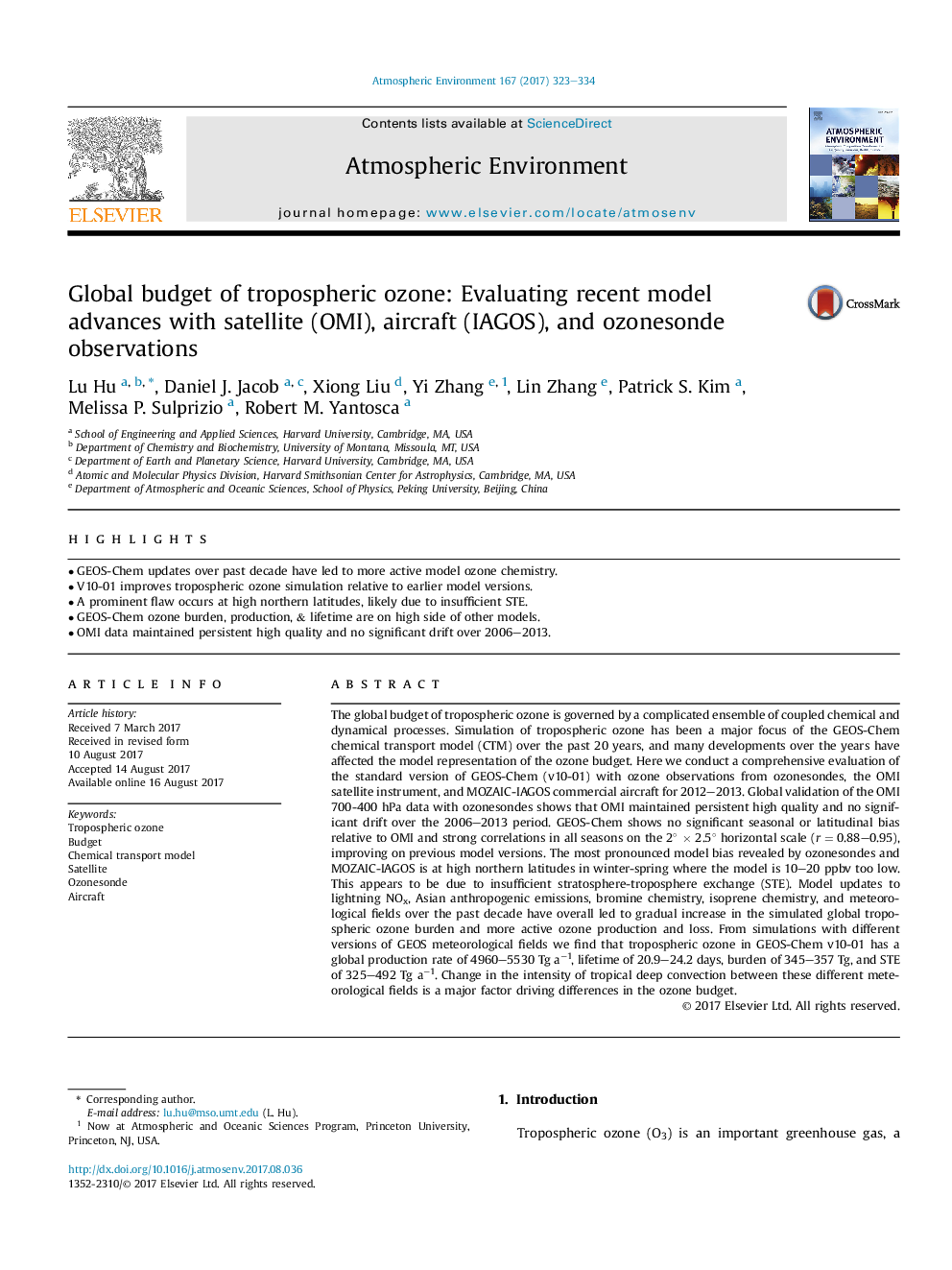| Article ID | Journal | Published Year | Pages | File Type |
|---|---|---|---|---|
| 5753073 | Atmospheric Environment | 2017 | 12 Pages |
â¢GEOS-Chem updates over past decade have led to more active model ozone chemistry.â¢V10-01 improves tropospheric ozone simulation relative to earlier model versions.â¢A prominent flaw occurs at high northern latitudes, likely due to insufficient STE.â¢GEOS-Chem ozone burden, production, & lifetime are on high side of other models.â¢OMI data maintained persistent high quality and no significant drift over 2006-2013.
The global budget of tropospheric ozone is governed by a complicated ensemble of coupled chemical and dynamical processes. Simulation of tropospheric ozone has been a major focus of the GEOS-Chem chemical transport model (CTM) over the past 20 years, and many developments over the years have affected the model representation of the ozone budget. Here we conduct a comprehensive evaluation of the standard version of GEOS-Chem (v10-01) with ozone observations from ozonesondes, the OMI satellite instrument, and MOZAIC-IAGOS commercial aircraft for 2012-2013. Global validation of the OMI 700-400 hPa data with ozonesondes shows that OMI maintained persistent high quality and no significant drift over the 2006-2013 period. GEOS-Chem shows no significant seasonal or latitudinal bias relative to OMI and strong correlations in all seasons on the 2° Ã 2.5° horizontal scale (r = 0.88-0.95), improving on previous model versions. The most pronounced model bias revealed by ozonesondes and MOZAIC-IAGOS is at high northern latitudes in winter-spring where the model is 10-20 ppbv too low. This appears to be due to insufficient stratosphere-troposphere exchange (STE). Model updates to lightning NOx, Asian anthropogenic emissions, bromine chemistry, isoprene chemistry, and meteorological fields over the past decade have overall led to gradual increase in the simulated global tropospheric ozone burden and more active ozone production and loss. From simulations with different versions of GEOS meteorological fields we find that tropospheric ozone in GEOS-Chem v10-01 has a global production rate of 4960-5530 Tg aâ1, lifetime of 20.9-24.2 days, burden of 345-357 Tg, and STE of 325-492 Tg aâ1. Change in the intensity of tropical deep convection between these different meteorological fields is a major factor driving differences in the ozone budget.
